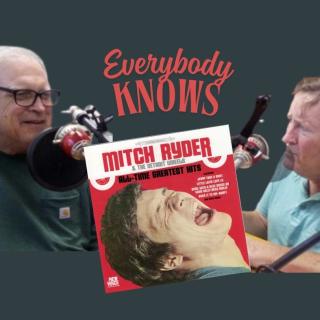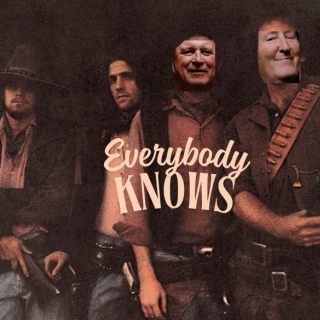Once you have taken the top-40 cover bands out of the equation, the undisputed king of Columbus music is the jam band. Of the 30 or bands playing in Columbus on any given night, it’s a reasonable expectation that eight or nine of them will be jam bands, playing a brand of music that is now on its third generation.
What is jam band music, anyway? Basically, it’s rock music which observes the standard structure of verse/chorus/verse during times that vocals are being sung. When vocals are not present, however, a jam band runs through a song’s primary chord progression an undetermined amount of times while one or more members play improvised melodies. There are some predetermined arrangements (typically a short, recognizable guitar melody), but it is largely left to the winds of fate.
Or, according to their detractors, bands that play long-ass impromptu guitar solos which end only when the singer walks back up to the microphone or the drummer quits.
When it comes to jam bands, you’re either a dedicated fan of the style or a white-hot hater. There are certainly things to like. As my friend Matt Sullivan points out, these are the bands whose fans will come out at 1:00 AM on a Tuesday. The musicians are generally more proficient than the average band, perhaps due to competition, and they often have on-key vocal harmonies. If you’re into dancing, it offers long stretches of music you can really dig into, unrestrained by most bands’ habit of coming to a shuddering halt every 3 minutes to drink beer and talk gibberish. Also, you can sometimes get the guitarist to say his solos are influenced by Coltrane, which is endless fun.
A lot of the hate is unfortunately political, driven by disdain for a liberal hippie lifestyle which the right wing is still convinced exists. That’s ridiculous of course – modern hippies and jam bands are about as political as a piece of toast -- but it is there. But even for liberals, if you don’t dance and/or aren’t high, the guitar solos can get tedious (even those purportedly making use of the mixolydian mode). It can be pretentious, and can’t seem to shake the specter of freshmen-at the-campus-union-poster-sale. And for some reason most lead singers tend to be wimpy.
Coltrane inspiration hilarity aside, the persistent vanity claim that jam band music is “an amalgam of a bunch of things” is actually pretty annoying. It absolutely is not -- Jam bands play diatonic chord progressions with an 8th note syncopated rhythm. The syncopation is the famous “back beat,” meaning an emphasis - the snare hit - on the 2nd and 4th beat of every measure. This is by any reasonable definition rock ‘n roll. Not blues, not jazz -- not even vaguely blues or jazz.
The lust for jazz identity in jam bands is particularly perplexing to me. Jazz-Rock is fusion, smooth jazz, Kenny G. It is nothing to be aspired to.
Other than that quibble, and my visceral revulsion to the lyrics of the band Phish, I can’t say that I had any strong feelings on jam bands one way or the other. I enjoyed Local Color at the South Berg in the 90s, but I have certainly had my patience tried with acts which were just a lot of guitar solo slush. I am fascinated, though, by the refusal of this genre to either die or change. You got to think there is something special about it.
A couple of the guys I play with also play with a cover band which does a great deal of Grateful Dead, Phish and Allman Brothers tunes, as well as some other classic rock. The rest of the band is composed of lovely individuals who had previously allowed me to butcher “Dead Flowers” with them at a happy hour. They offered up a Hammond B3 at their next gig, as well as free drinks, good times and even the possibility of being paid. How could I not sign up?
I didn’t get a set list, let alone a practice. Indeed, I felt lucky to get a list of songs the band does and the name of the bar. I’m not nearly good enough on keyboards to just jump in, so I spent a nervous night at the living room piano charting songs and annoying the dogs. When I got to the first show, I found out they were playing half the songs in different keys. Ah well, sink or swim; I’ve got a volume pedal.
I was fortunate to be playing with kind and forgiving musicians, who were either totally oblivious to my playing or pretended to be. I was frankly shocked when I was asked to do another gig, and shocked again when that turned into another one -- they even let me sing a few tunes and play a little guitar. Sure, I secretly long for charts, composed melodies, set song lengths and choreographed endings, but I can handle it. I’m having a good time.
Better yet, I’ve achieved my lifelong ambition to play “Werewolves of London” in front of an audience. I just tore into it mid-set, and nobody batted an eye (although the guitarist did momentarily confuse it with “Sweet Home Alabama”).
So this is what I have learned about the genre both by taking in the view from the stage and by observing the groups playing before or after us (or, perhaps more importantly, having beers with them):
-
This is delightfully easy music to play – the progressions are simple, and you don’t have to pay attention to where you are in a song if you know the lyrics – all is cued by the singer walking up to the microphone.
-
This is dance music, right down to the boys-coming-out-because-the-girls-are-there. You get a buzz onstage from dancers, I remember it from playing in a top-40 band years ago and I missed it.
-
If people don’t dance, you sometimes feel like droning background music.
-
Allegations of beauteous collaboration aside, this is a lead guitarist’s world. Keyboardists must stay the hell out of the way.
-
The Grateful Dead had a lot of really good songs you have forgotten about. So did the Allman Brothers.
-
Phish did not. What’s with all the G sharp minors, anyway?
-
Speaking of Phish, yes they are fucking terrible. You’re not going to convince anyone of this, however, so don’t waste your time. Remember Steven Hyden’s famous quote: “in order to like Phish, you must first consciously decide to like Phish.”
-
First generation jam band fans are rarely sighted. Second generation jam band fans are grown up whiskey drinkers determined to have a good time on their night out. Third generation fans wear backwards baseball caps.
I think I did discover what is so different about the jam band scene – it may be the last merit-based original music genre in Columbus. There is a ready-made audience for this music, an actual demand, and every year Ohio State brings more. If you’re relatively good, people will come out to see you who aren’t your friends or otherwise coerced. So there is an incentive to actually pay attention to music rather than networking and physical attractiveness.
The downside to this is that, like top-40 acts, the bands are fungible. If they all disappeared, others would instantly rise to take their place, and their lead guitarists would duly be proclaimed geniuses. But hey, for the time being Scarlett Begonias all around, and pass the Southern Comfort.



